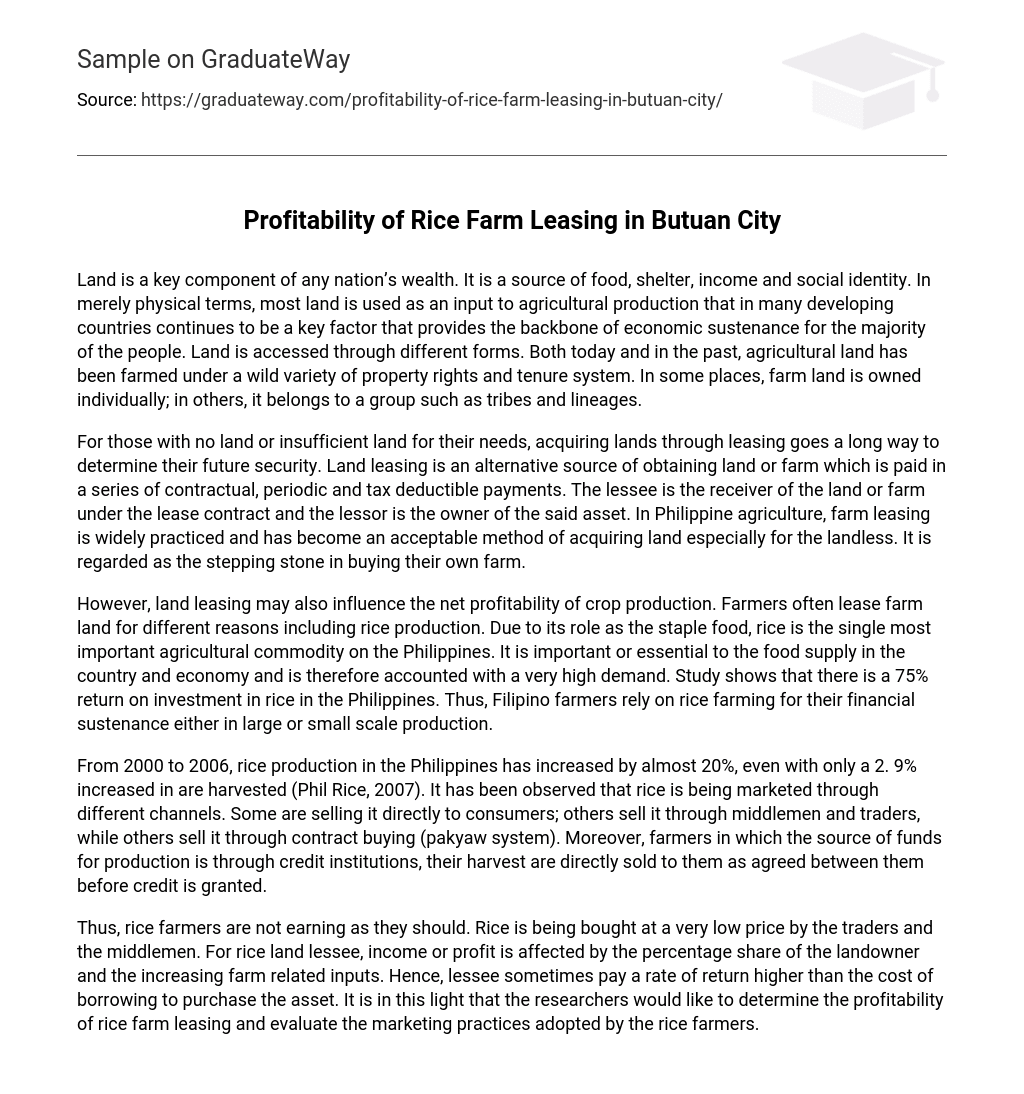Land is a key component of any nation’s wealth. It is a source of food, shelter, income and social identity. In merely physical terms, most land is used as an input to agricultural production that in many developing countries continues to be a key factor that provides the backbone of economic sustenance for the majority of the people. Land is accessed through different forms. Both today and in the past, agricultural land has been farmed under a wild variety of property rights and tenure system. In some places, farm land is owned individually; in others, it belongs to a group such as tribes and lineages.
For those with no land or insufficient land for their needs, acquiring lands through leasing goes a long way to determine their future security. Land leasing is an alternative source of obtaining land or farm which is paid in a series of contractual, periodic and tax deductible payments. The lessee is the receiver of the land or farm under the lease contract and the lessor is the owner of the said asset. In Philippine agriculture, farm leasing is widely practiced and has become an acceptable method of acquiring land especially for the landless. It is regarded as the stepping stone in buying their own farm.
However, land leasing may also influence the net profitability of crop production. Farmers often lease farm land for different reasons including rice production. Due to its role as the staple food, rice is the single most important agricultural commodity on the Philippines. It is important or essential to the food supply in the country and economy and is therefore accounted with a very high demand. Study shows that there is a 75% return on investment in rice in the Philippines. Thus, Filipino farmers rely on rice farming for their financial sustenance either in large or small scale production.
From 2000 to 2006, rice production in the Philippines has increased by almost 20%, even with only a 2. 9% increased in are harvested (Phil Rice, 2007). It has been observed that rice is being marketed through different channels. Some are selling it directly to consumers; others sell it through middlemen and traders, while others sell it through contract buying (pakyaw system). Moreover, farmers in which the source of funds for production is through credit institutions, their harvest are directly sold to them as agreed between them before credit is granted.
Thus, rice farmers are not earning as they should. Rice is being bought at a very low price by the traders and the middlemen. For rice land lessee, income or profit is affected by the percentage share of the landowner and the increasing farm related inputs. Hence, lessee sometimes pay a rate of return higher than the cost of borrowing to purchase the asset. It is in this light that the researchers would like to determine the profitability of rice farm leasing and evaluate the marketing practices adopted by the rice farmers.





